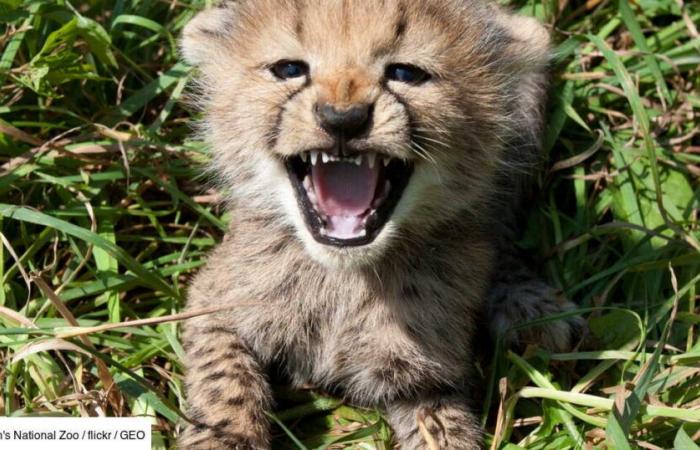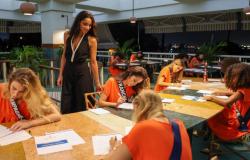An incredible encounter took place in 2011 in Athi Kapiti Reserve, Kenya: a spotless cheetah, nicknamed the “golden cheetah”, was seen for the first time in 90 years. It was the British wildlife photographer Guy Combes who had the privilege of immortalizing this unique feline, located in this region south of Nairobi, near Amboseli. This cheetah is distinguished by its golden coat, the result of a rare genetic mutation that dilutes the usual spotted pattern of these felines.
The absence of stains, an advantage?
Before this, the last documented sighting of a cheetah without spots dates back to 1921, in Tanzania. Historical accounts mention color variations as early as 1608, when a Mughal emperor of India described a white cheetah with blue spots.
This genetic phenomenon raises fascinating questions about the evolution and diversity of species. Experts say this particular coloration could give the cheetah a camouflage advantage, making it appear like a young lion, increasing its chances of survival in the wild.
These little-known feline species
The discovery of this cheetah is particularly significant in a context where the cheetah population in Kenya is in decline, with fewer than 1,300 individuals remaining. These felines face major challenges, such as habitat loss due to human expansion and infrastructure projects, including the creation of a technology city near Nairobi.
A strong emotional moment
Guy Combes, who traveled the 100,000-acre preserve, initially thought he would never see this rare animal. After several days of fruitless searching, he finally received a call informing him that the cheetah had been spotted.
The photographer then managed to get within about 50 meters of this magnificent specimen. “It was a stunningly beautiful animal. I didn't expect to see it at all,” he marveled at the time to the Guardian, also emphasizing the crucial importance of conservation efforts for this emblematic species.
It was first in the women's press, but especially the sports press, that Chloé began her career as a journalist, with a great predilection for rugby and tennis. But at the same time, she has always been passionate about travel, animals, adventure (and thrills). On the program, volunteering in a wild animal dispensary in South Africa, observing gorillas in Uganda, rafting on the Nile, or even swimming with orcas in Norway. So, when, after ten years of writing about the little yellow ball or the oval ball, the opportunity to join GEO.FR presented itself, Chloé did not hesitate! Trading one passion for another, she now writes about animals – and from time to time goes on a reporting trip to meet them (and she tries as much as possible to integrate a little sport into all this, with meetings of athletes inspiring). Adventures can be found in particular on the GEO.FR website (in the Animals or Travel sections) and on the @geo_France Instagram account!
Read more
Read less
France






